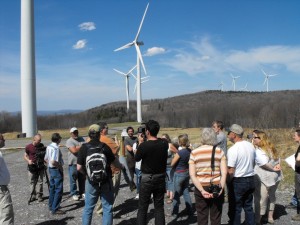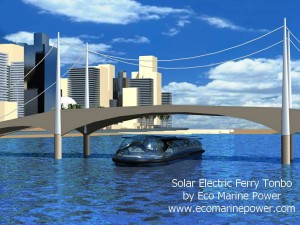Bridge to the Future of Renewables not Natural Gas
Opinion Editorial by S. Thomas Bond, Morgantown Dominion Post, August 28, 2016
Carbon dioxide emissions from natural gas are projected to exceed emissions from coal by 10 percent this year, accdording to the U.S. Energy Information Administration. (EIA). Last year, natural gas use was 81 percent highter than coal, although its emissions were nearly equal.
“Another contributing factor to lower carbon intensity is inceased consumption of fuels that produce no carbon dioxide, such as nuclear-powered electricity and renewable energy,” the EIA said.
Of course, gas has several problems, among them the venting of methane, a much more serious short-time greenhouse gas than carbon dioxide; production of huge quantities of wastes, which is an environmental problem, and which requires a great deal of energy to handle; the destruction of aquifers; and its health effects on workers and people living near fracking gas wells.
Recent research by Oil Change International (a research, communications and advocacy organization focused on exposing the true costs of fossil fuels) shows that if all the proposed new pipelines in Appalachia to fire boilers for electricity generation and serve other consumers are completed, it will be impossible for the U. S. to meet its climate goals. There are 19 pipeline projects proposed to get gas out of the Marcellus and Utica shale regions.
It is obvious the old saw used by gas executives that “natural gas is a bridge to the future” really isn’t what they have in mind. They don’t intend to make way of renewables, in spite of the language. They want an era of carbon burning dominated by gas to use of the known reserves. What we are seeing is business as usual, with no real consideration of impacts on climate.
Flooding in the South – 31 inches of rain in a week, more than a “once in a thousand years” flood in that area – due to warmer ocean termperatures, which cause more water evaporation.
Forest fires in the West are due to warmer air, causing draught. At the same time, it is reducing food production in many areas.
The ocean level is rising, something the U. S. military is preparing for at coastal bases. The real estate company Zillow predicts 1.9 million homes will be lost by 2100 and cause a $882 billion loss. The Federal Emergency Management Agency has told the states if they do no climate planning they will get no money from it.
All over the world, glaciers are melting. The winter snow pack in lower elevations is less. This threatens the water supply of many areas in the West and around the world. Permafrost is melting; Arctic coasts are sloughing off into the ocean. Species like alligators and mosquitoes and many plants are moving north, flowers are blooming earlier in the springtime; birds are nesting earlier, and many formerly cooperative species have lost the connection.
But in Florida it is illegal for state officials to talk about sea level rise. On the other hand, Massachusetts is encouraging offshore wind projects by legislation; has banned electricity rate hikes to fund gas pipeline projects – a court considers if speculating with ratepayers’ money, speculation that is more appropriately the responsibility of investors. That state’s highest court has also rejected public subsidies of fossil fuels. Maybe it has something to do with the high educational level of the population of the state.
I live about two miles from a truck stop. In years past, I have seen several of the huge propellers for a wind turbine go through there in a month. Then the Pennsylvania Legislature made it more difficult to establish windpower; and now they are few and far between. This amounts to a kind of subsidy for fossil fuels, too.
So what is the status of renewables? The United States in 2015 built more solar electrical generation capacity than gas generation capacity, according to a recent article in Fortune, and also in the first quarter of 2016 according to another source.
Yes, they have had subsidies, but so have fossil fuels, huge subsidies and a lot of favorable legislation for them and the utilities that burn carbon to produce electricity.
With much of solar the utility is eliminated, and no long wires, no second big business to take its share. Kansas will have enough wind power to meet its needs in a few years.
Sure, fossil fuels are still far ahead of renewables, but that is going to change at an exponential rate if it is not stifled. Subsidies are going to the wrong kind of industry.
Talking about climate change, Paul Krugman got it right in his August 22 column: “We face a clear and present danger, but we have the knowledge to deal with that danger: The problem is politics ….”
S. Tom Bond is a retired chemistry professor and a member of the Mountain Lakes Preservation Alliance, who lives near Jane Lew, Lewis County, WV.


